From Sneed: Following our Accidental Big Year last year, Braden has set out to really smash his Big Year record of 335 birds in 2022, with a goal of at least 400 species. He and I got a great start in Montana on New Year’s Day, but that was nothing compared to the trip he just took with our recent guest blogger, Nick Ramsey. As soon as Spring Break began, he flew to New Orleans where Nick picked him up and they embarked on a break-neck marathon birding expedition the length of the state of Florida. Here is Braden’s first installment of this epic adventure.
I awoke at dawn, no more than five hours after I’d fallen asleep in the passenger seat of Nick Ramsey’s gray-gold Honda Pilot named Betsy, parked on a sandy road surrounded by Longleaf Pines in Apalachicola, Florida. Nick was already outside, overturning logs and branches in search of herps—reptiles and amphibians—and he greeted me as I climbed out of the car, as did his dog Dixie, a mutt the size of an obese squirrel, who marked my jeans with the first muddy smears of the trip.
“We’re not that far from the pin,” said Nick, his binoculars and camera slung across one shoulder. “If we just walk along this road and then bushwhack a little, it should be pretty easy to find.”
We set off along the sandy road, and birds I hadn’t seen or heard in years belted out melodies: Pine Warblers, Northern Parulas, Carolina Wrens and Tufted Titmice. While this trip’s main goal was to seek out birds, it doubled as a general nature expedition, and right now we were on the hunt for salamanders. Following directions Nick’s friend had sent him, we walked through oaks and pines until coming across a small seep in the forest. Nick immediately stepped into the water, his sneakers sinking up to his shins, and began overturning logs.
“I got one!” he soon shouted, shoving his hand into the muck and pulling out a small, dark gray amphibian. It was the threatened Apalachicola Dusky Salamander, a creature whose range was almost entirely confined to this small part of Florida and a nearby part of Georgia. This had been Nick’s main amphibian target of the day, meaning that we’d already achieved one of many goals we had talked about for the trip.
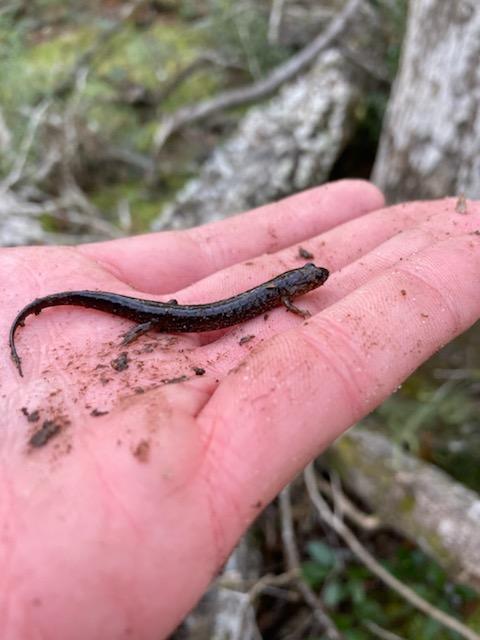
Birdwise, I’d compiled a list of about a dozen or so species that I wanted to see while I was down here. For this Pineywoods section of the state, my main targets were Red-cockaded Woodpecker, Bachman’s Sparrow and Brown-headed Nuthatch, a bird that had eluded me several times already. Unfortunately, while the area surrounding the salamanders’ habitat was indeed filled with Longleaf Pine—which all three of these species needed—there were neither mature-enough trees nor grassy-enough ground for any of them. Further south, though, we hoped to see the endemic Florida Scrub-Jay, as well as Snail Kites and Limpkins, two species well-known for their dependence on apple snails. White-crowned Pigeon was a goal in the Florida Keys, as was my number one target for the trip: the notoriously difficult Mangrove Cuckoo. I also wanted good looks at Burrowing Owls and Sandhill Cranes while, as a veteran Florida birder, Nick’s goals oriented more towards Miami exotic species, specifically White-winged Parakeet, Red-whiskered Bulbul and Spot-breasted Oriole. Besides this, we just hoped to see as many birds as possible—and we’d already made a good start.
After picking me up from the New Orleans airport the day before, Nick had driven us to the largest, ugliest lake in Louisiana in search of a Brown Booby someone had reported on Facebook just minutes earlier. Lake Pontchartrain had all of the color and none of the appeal of chocolate milk, stretching out of view so that it looked just like the Gulf of Mexico. The Brown Booby, a species that lived in the Gulf, had thought so too, and we’d found the bird surrounded with Brown Pelicans and Double-crested Cormorants perched on some sort of piping running into the water. After this early success, we had gone to a bar where I tried Cajun food for the first time. All I can say is that, if there were boudin balls in Maine, I would never eat another dining hall meal again.
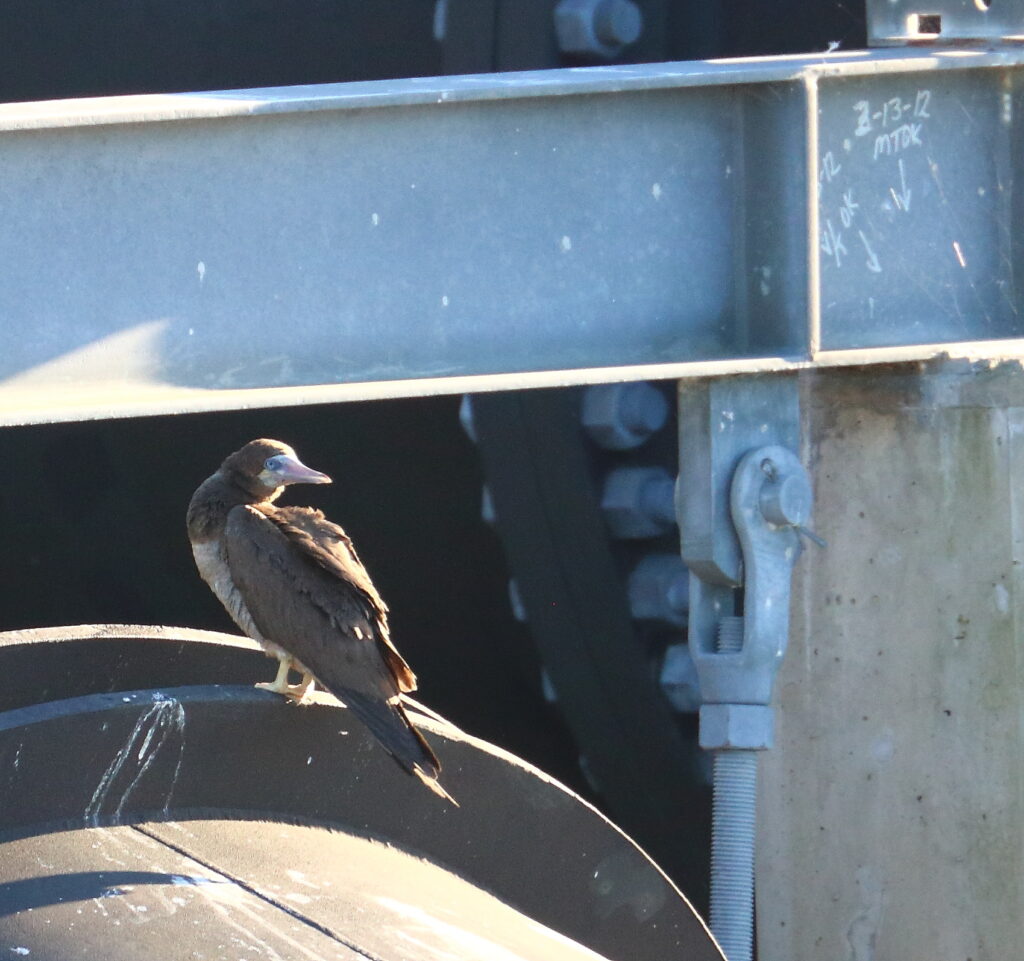
After spending our first of many nights in Nick’s car in Apalachicola, we woke to the Dusky Salamanders, and also discovered a Southern Toad under a small log. Then we drove to our next pin, a pull-off on the side of the highway where we were rewarded with pitcher plants, sundews, and introduced Venus flytraps. The rest of the day we devoted to birding. As we cruised the entrance road to St. Marks National Wildlife Refuge, Nick called out the songs of White-eyed Vireos, which sounded like those of the Cassin’s I knew quite well mixed with random “chuck” calls, as they emanated from the forest. We pulled into the Visitor Center Parking Lot, finding ourselves in classic old-growth Longleaf forest. Here, large patches of palmetto and young pines stuck out from the scrubby understory, and Nick immediately began overturning dead fronds to look for Pygmy Rattlesnakes. The young Longleaf Pines looked just like tall, extra-green tufts of grass, a really strange feature unique to this conifer.
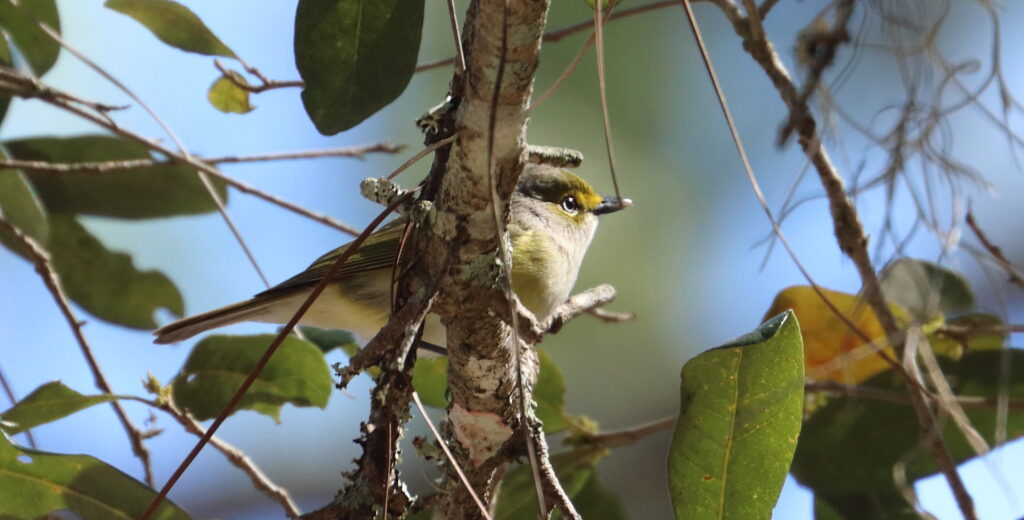
With few birds at the Visitor Center, we drove to Helipad Landing. Red-cockaded Woodpeckers had been reported here, and a large field of brambles served as a wintering site for Henslow’s Sparrows, LeConte’s Sparrows, and sometimes, Yellow Rails. In true Nick Ramsey fashion, Nick set off across the field in hopes of flushing one of these species while I stayed on the road with Dixie. Again, we didn’t find much.
“Don’t worry,” said Nick as we walked back to the car, “Wait until we reach the ponds. We’ll see so many birds that we won’t know what to do with them.”

As we rounded a corner towards one of the ponds, however, we were met with an unexpected sight: save for a few Pied-billed Grebes, the water was almost completely deserted. We saw not a single duck, much less the huge wintering flocks St. Marks was known for. Apparently, this year was not the first year that winter waterfowl numbers had been low in Northern Florida. Climate change had rendered conditions more suitable for ducks to winter further north, and thus, the ducks had no need to continue their southward migration. We did spot a few more birds that I hadn’t seen for years at this spot, called the Stoney Bayou, including Anhingas, Little Blue Herons and a Boat-tailed Grackle, but felt a bit disappointed. Thankfully, as we continued to drive things began to pick up.
Nick abruptly stopped the car as we were driving around a pond. “I can’t tell if that’s the call of a Prairie Warbler or a Hooded Warbler. Do you wanna get out and look for it?”
I did, camera-ready, given that Prairie Warbler would be a lifer while Hooded would be flagged for the area. An Eastern Phoebe sat on a snag underneath an Anhinga sunning itself, and I scanned the bushes behind them for yellow birds that might be skulking there.
“Oh crap, it’s both!” shouted Nick from the car behind me.

Sure enough, a bright male Prairie Warbler hopped into view above the phoebe—my first lifer of the trip! And below it, a beautiful male Hooded Warbler hopped onto a log floating in the water, chasing insects around as it dodged and wove between overhanging branches.
The birds continued to multiply as the road reached the ocean at a place called Lighthouse Pond, and we walked around it, tallying waders and seabirds as they flew over our heads. St. Marks was well-known as the wintering site for a single American Flamingo, and we spotted it way out in the bay with its head tucked into its feathers, resembling a pink lollipop sticking out of the ocean. At Lighthouse Pond I also spotted our first American Alligator, floating suspiciously near a Tricolored Heron, and I decided that I would keep a running tally of these cool critters. Back at the Visitor Center, we ran into a mixed flock of warblers, gnatcatchers and vireos foraging in the pines above us. There I spotted my lifer Yellow-throated Warbler alongside parulas and Black-and-White Warblers, and Nick pointed out our first target bird of the trip, a Brown-headed Nuthatch squeaking as it climbed up a nearby tree.
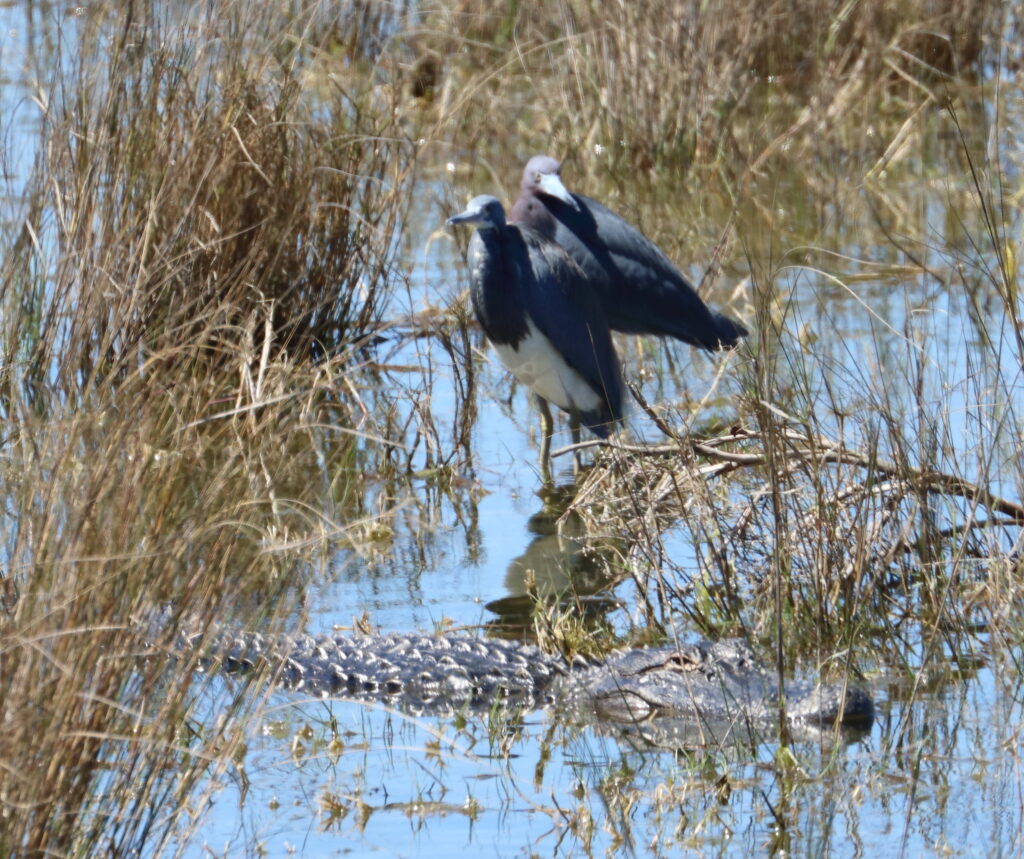
At the Panacea Unit of the Wildlife Refuge, known for its old-growth pine forest and extensive saltmarsh, we struck out on Red-cockaded Woodpecker and Bachman’s Sparrow, arriving at the saltmarsh just as the sun began to set. We did spot three Wood Storks, and heard were the raucous calls of Clapper Rails, both species I’d never observed before! Soon enough, Nick waded out into the marsh, flushing up both Seaside and Nelson’s Sparrows for brief looks. An American Bittern lifted out of the marsh as the light grew gray, and we feasted on celebratory sandwiches as we drove through the night towards the Atlantic Coast of Florida, where we’d be crashing at Nick’s grandmother’s vacation home. Despite it not being a particularly lucky day, we’d observed almost 100 species at St. Marks alone, setting a great tone for the rest of the trip. However, we had no idea what was to come in the next five days as we planned to traverse the entire length of Florida and back.
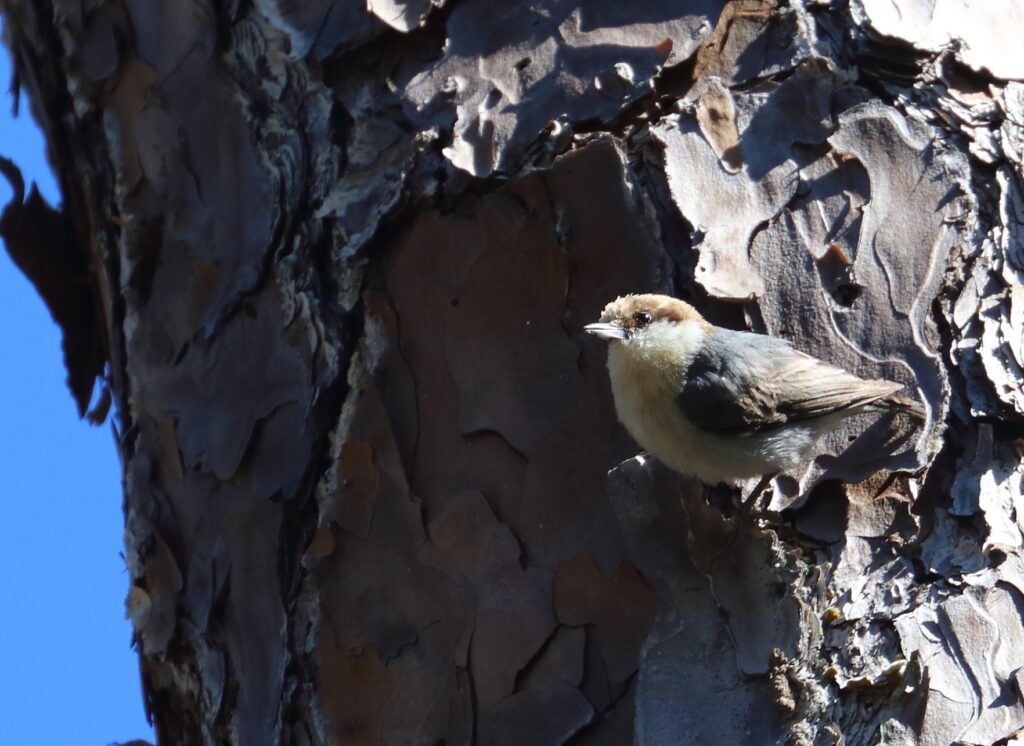

So awesome! Great salamander find and booby too. Great report!
Thanks so much, Troy. Braden is busy working on the next installment 🙂
Great report – two bird-savvy dudes on a mission! 100 species in a day, awesome! I can’t even imagine numbers like that, and you’re just getting started. Looking forward to the next dispatch from our trusted orno-correspondents. Bird on, Dudes.
Well, these are the two guys who can do it. Wait til you read about the following days. An epic expedition for sure with amazing birds.
What a fun time for them!!!
This was spectacular. Great ride!
Be very careful digging in the ground in Florida.
The Hammerhead worm is among us. Very dangerous!
Carry on! Really enjoyed this! Love, Penny
This is why I lived in mortal fear during my summers in Florida (shudder)!
Wow, Spring Break never looked so tiring! But Cajun Food would make up for that. Sneed, when you and I were in school, did we ever go anywhere or do anything for that week? I don’t think it was a thing even for the rich kids back then.
I think I flew back east to see a girlfriend once, but no. Seems like we just went home and did laundry.
Also, remember, there were no birds back then.
That’s right; like us, they were still dinosaurs!